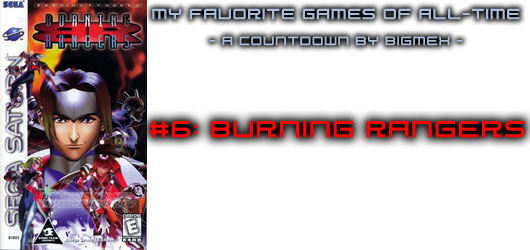
Most people know that I'm a Sega fan. Always have been, always will. Sonic Team used to be the best development team over there. I say used to only because Yuji Naka burned out shortly after the release of this game. For a while I held him in high regards. Easily the best at Sega and one of the best designers ever. In fact, I have yet to find any Japanese game designer whose library of work I enjoy more. For reference I think David Jaffe has the best USA lineup ever.
Burning Rangers is proof that gameplay, and game design are king. The game is short, very, very short. Other adventure games like Tomb Raider and God of War are credited for longer experiences. Longer games don't always mean better experiences though. In that span of Burning Rangers we get two things, a play through a fantastic world and a glimpse into the genius of Naka.
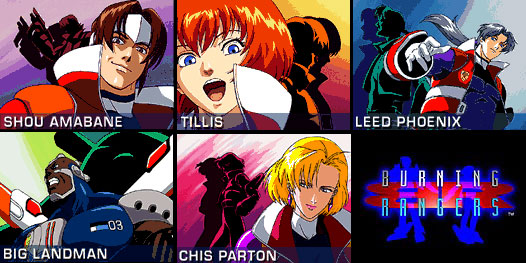
Burning Rangers crosses genres, despite its brevity the game touches many bases. It combines anime with science fiction and high adventure. The Burning Rangers are an elite group of firefighters. They rescue people from collapsed structures where other firefighters cannot reach. Their skin-tight suits are fire proof, water proof. They can even fly and float with the aid of rocket packs fashioned to look like wings. The subtext is that they are high-tech angels sent to rescue people in their greatest time of need.
Naka helped craft a world that was believable and also perfect for a game. The Burning Rangers fought fires with blasts of energy, these energy blasts absorbed heat and converted fire into energy crystals. These crystals became important because they could be used to power a teleporter and send rescue victims out of harms way. The faster the fires were put out, the lower the chance that explosions would follow the player. The number of people saved, time spent and crystals left over helped set the points for the game. Players that wasted too much time not only received poor scores, they also had to deal with violent fireballs that chased them through the level.
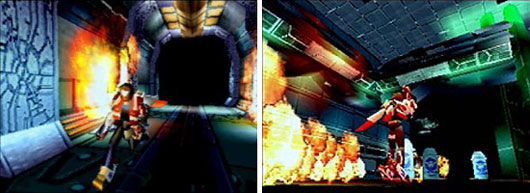
Naka pioneered a few important things in this game. The levels could be randomly generated after a first play-through. The rooms themselves wouldn't change, only certain doors and tunnels not previously accessible would open up. The possibilities kept the game new and fresh for multiple play-throughs. Random level generators are nothing new to RPG fans but a whole new experience to adventure gamers.
Naka also wanted to emphasize the use of our senses in the game. Rather than just running and gunning between floors players had to listen for backdrafts. A rush of wind was a cue to jump back and prepare for an explosion. If not the player would be injured by the resulting fireball. The controls were simple and became intuitive with little time. We could scour every floor quickly for survivors, put out fires quickly and even listen for cues as to the next hot spot or survivor while in the middle of a fire fight.
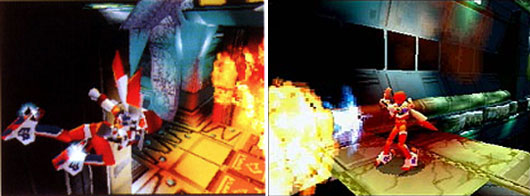
The characters all fit the template of classic anime. There is the level-headed leader Chris, the strong guy "Big," the aloof member Lead and the two playable rookies Tillis and Shou. The original design was for multiple players to be able to choose members of the team and help find victims in massive levels. There were plans to have network co-operative play. Given the development cycle and limitations with the hardware much of that was scrapped. From time to time we still get to see team members appear on a level, sometimes through the glass a floor below. The AI still helps us with a portion of the game and one can only imagine how much fun it would have been with two players or more.
The game itself is memorable for many reasons. The action and exploration elements were important. What helped cement the game was the impeccable level design. Each level was self-contained and fully realized. Details abounded on each level. Doors with working lights and locks, an environment that was visible through windows. The illusion of depth and dimension maintained through the whole game. While clunky by todays standards, the graphics and lighting effects were far ahead of their time.
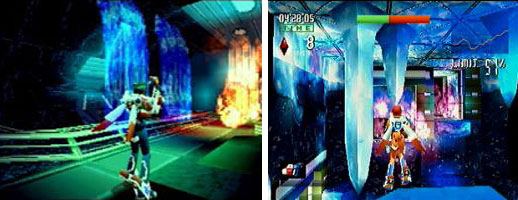
Always thinking of the future the levels are not designed with either an Eastern or Western influence but rather something in between. The look was clean and high-tech but not dated. Each of the levels had a theme which helped make them unique. Unfortunately there were only four levels in the game. A fuel factory, an underwater lab, a space station and a massive space barge. Each level came with obstacles aside from mini puzzles, victims and fires. They also included crazed robots, security droids and massive bosses.
Each person scattered on these levels in need of rescue had something to say. Whether is was a simple thank you, a cry for help or even a plot point Sonic Team made sure that these people all had names and all reacted in a different way when they saw you. The idea of making a player give an emotive reaction to a game has been the talk in the industry for the past few years. Sonic Team was way ahead of the curve. When rescuing a child the first thing a character does is tell them everything is going to be okay. If you find a victim that is unresponsive he or she is knocked out, Chris gives you statistics on some of the rescues and tells you which ones are in bad shape. The thought of making sure every floor, every room, every corner is clear of survivors pushes you against the clock. Some times you even get e-mail updates from those that you rescue. Whether it's a note of thanks or important information related to the story, every little bit becomes appreciated. The survivors help add dimension to the gameplay. In the end it's an emotive reaction makes me appreciate real firefighters and paramedics each and every day.
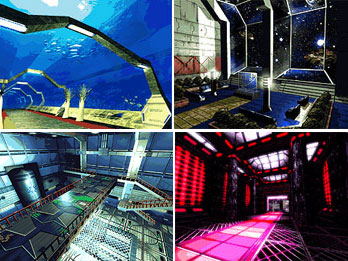
A signal from space is causing the electronics to go haywire on Earth. The fuel factory and underwater lab, for example, suffered from explosions shortly after the signal was received. The underwater lab was my favorite level. Portions of the stage had you swimming underwater and even rescuing a dolphin and killer whale. Tillis has a latent psychic ability and could communicate with the sea life. This comes in handy when you need to use a dolphin to take you to levels unaccessible by swimming under your own power.
I had a blast controlling the characters underwater and certainly wish I had a dolphin pull me along on some levels in, oh let's say God of War... Not to mention that this was also the same underwater lab where school kids were at during a field trip. So not only do you end up fighting fires and trying to find your way through sealed off underwater tunnels, you also have children to worry about. No level in God of War ever pulled that much emotion from me.
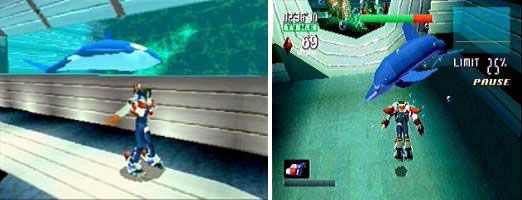
The bosses in the game were as impressive as the levels themselves. Massive in scale and reminiscent of the designs used in Sega's Virtua On or Taito's Darius, the bosses in Burning Rangers were nothing short of awe-inspiring. The machinations that you fought were created by the signal from space. Each boss was unique to it's environment. The boss at the fuel factory shot fire, the one at the underwater lab was a robotic fish with a pulse bomb and torpedoes.
Each of the bosses was directly tied into the plot of the game. These bosses are the result of a haywire sentry program that was designed to protect a girl with an incurable disease. She was in suspended animation inside an unmanned space barge. When word of a cure was sent from Earth, the space barge responded by sending back a defensive program and causing havoc. Sonic Team used a variation of this story in Sonic Adventure 2.
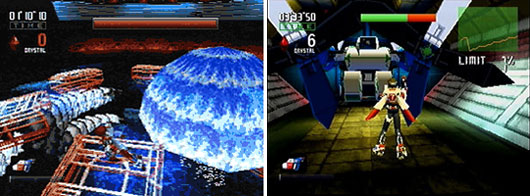
The Burning Rangers are led from one encounter to the next and eventually find the source of the signal. The space barge has become massive by collecting space debris over the years. An unfortunate side effect due to its defense programming. Now more a small moon than a satellite it would lead to disaster if it re-entered Earth's atmosphere. The Burning Rangers are placed in their most dangerous assignment ever. Get past the defenses of the barge, rescue the girl and prevent the barge from colliding with the Earth. Hey, not a problem at all for the world famous Burning Rangers!
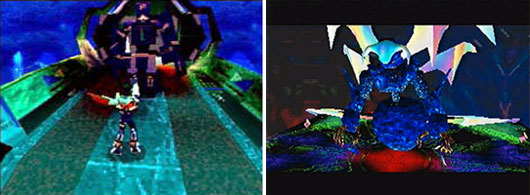
Did I mention that in one level you actually get to pilot the Burning Ship into space and use it to breach the defenses of the space barge? This game really does have it all!
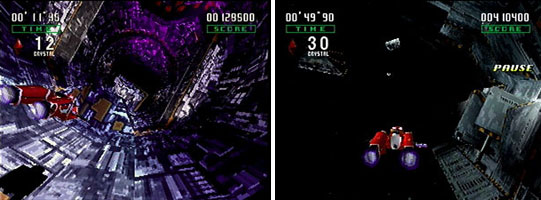
Few videogames accomplish anything of such magnitude within a few levels. That is the genius of Naka. We get to see everything that he wanted to put into the game, albeit a shorter version than he envisioned but also things that would have been completely cut out if done by another designer or team. We get a taste of what could have been if only Sonic Team were given more time and resources and yet find no faults with the game we are left with. That is what drives me crazy about Naka and the state of game design today.
With a high to moderate budget, using an engine he designed, on the final cycle of releases for the aging Saturn, Yuji Naka and Sonic Team completely knock one out of the park. No other designer, to this day (save for Miyamoto) has accomplished more with less. It almost seems as if Naka and co. are capable of greatness only when they are left with few resources. I believe the more they had the worse their games were. Epic games can be short and sweet, no studio could ever lay claim to something remotely close to Burning Rangers.
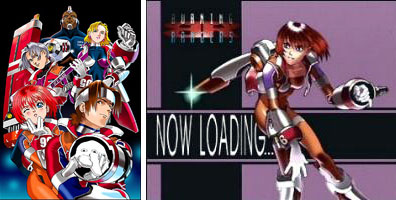
As a bonus Naka always played up to the fans. Those that bothered to play through the game multiple times were rewarded with codes and secrets. Allowing players to choose different Burning Rangers for the levels and even unlock a mini game with the Burning Ship. If you put the game disk into a computer you could even get several wallpapers and system sounds for your e-mail featuring the voice actors from the game.
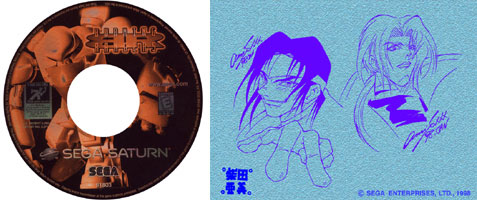
The curse with this game is its brevity. At double the size, with all of the features that Naka envisioned it might have been a contender for the number 1 spot. As with some of Naka's great games I am left wanting more. I would love to see a sequel worthy of the name. I would love to see an anime series based on it. But instead I will settle with what has been, an experience that will remain with me all my days.
You should play it if you haven't already and see how great adventures could be made.
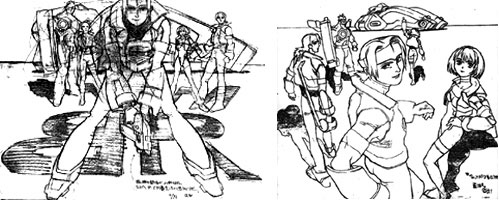
I’d like to hear your personal top-10, top-20, top fighting games, top sports games, or top games in any genre. Let me know in the comments section please. As always if you would like to sponsor me
please visit my Patreon page and consider donating each month, even as little as $1 would help make better blogs and even podcasts!














No comments:
Post a Comment